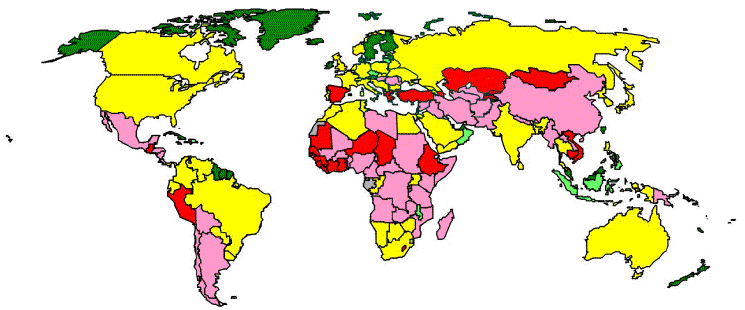

![]()
Anthrax is an infectious disease caused by the bacterium Bacillus anthracis.
Many symptoms occur with anthrax (usually within seven days of initial contact) such as:
|
|
|
|
|
1) Through cuts or breaks in the skin resulting from contact with an infected animal (cutaneous anthrax), resulting in local and possibly systemic (bloodstream) infection.
2) From breathing anthrax spores (termed "woolsorters" disease) resulting in an infection of the lungs (inhalational anthrax).
3) From eating infected meat, resulting in gastrointestinal infection (gastrointestinal anthrax). Gastrointestinal anthrax is generally not considered a threat to U.S. forces.
--Inhalational anthrax is virtually always fatal.
--Low cost of producing the anthrax material.
--Not high-technology. Knowledge is widely available.
--Easy to produce in large quantities.
--It is extremely stable. It can be stored almost indefinitely as a dry powder.
--It can be loaded, in a freeze-dried condition, in munitions or disseminated as
an aerosol with crude sprayers
How does it work?
---The spores enter the body through breaks in the skin, by being deeply inhaled
into the lungs, or from eating meat or unpasteurized milk from a sick animal
with anthrax. Once inside the body they germinate (turn into the bacteria). The
bacteria multiply and spread through the blood to cause a high level of bacteria
in the blood (septicemia). The bacteria produce toxins, which harm the person
infected.
--Anthrax works much like a chemical reaction when it enters he body and
combines with blood cells and causes
problems.
esponse@ashastd.org
Below is a map of outbreaks in the world:


(picture taken from the World Anthrax Data Site)
To maintain more information about Anthrax, contact:
Regional poison control center (1-800-222-1222)
Center for Disease Control and Prevention
phone: (1-888-246-2675)
e-mail:
cdcresponse@ashastd.org
Go to Center for Disease Control: Anthrax
Go to Home Page